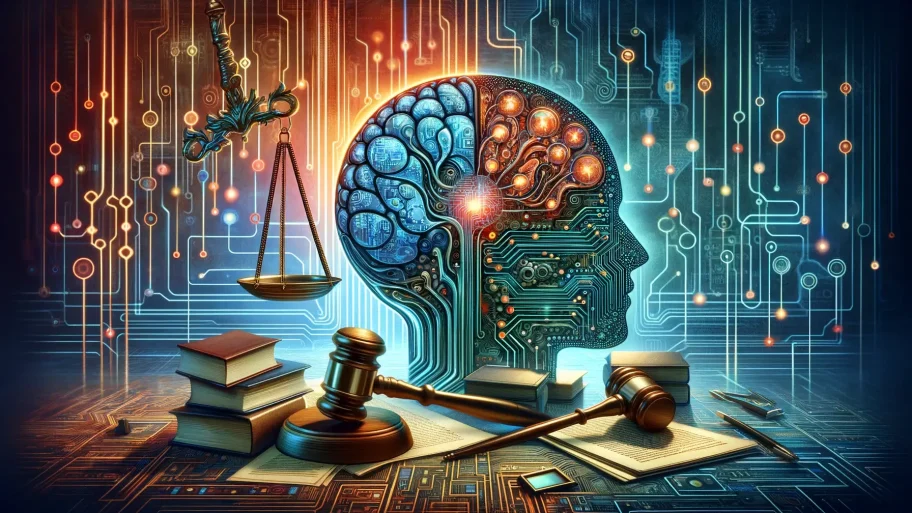Top 5 AI Use Cases In Gaming Real-Time Strategy
- By Matt

Attention Gaming Enthusiasts and Industry Professionals!
Picture a future where gaming is dominated by ruthless AI opponents, unpredictable content, and constantly shifting challenges. These are not distant possibilities but looming threats for those who fail to integrate AI into real-time strategy games today.
In this article, we’ll reveal how AI can transform real-time strategy gaming, helping you avoid these formidable obstacles.
Key Takeaways
- Adaptive AI Opponents create ever-evolving challenges for players.
- Procedural Content Generation ensures endless variety and replayability.
- Dynamic Difficulty Adjustment keeps gameplay challenging yet fair.
- AI-Driven Game Testing identifies and resolves issues quickly.
- Enhanced NPC Behavior makes non-player characters more lifelike and unpredictable.
Use Case #5: NPC Behavior Evolution
Starting our countdown at number 5 is the revolutionary use of AI to create more complex and lifelike NPC behaviors, significantly enhancing immersion in real-time strategy games.
The Peril of Predictable NPCs
Predictable NPC behavior can lead to repetitive and uninspiring gameplay. When NPCs act in overly scripted or simplistic ways, it diminishes the challenge and excitement of the game.
This predictability can make the game less engaging and ultimately less enjoyable for players, reducing replay value and player retention.
Drawbacks of Static NPC Behavior
- Decreased player engagement
- Lower replay value
- Reduced challenge
- Less immersive gameplay
Reinforcement Learning for NPCs
AI enhances NPC behavior by using reinforcement learning algorithms. These NPCs learn from player actions and adapt their strategies, making them unpredictable and challenging.
Implementing AI for NPC behavior ensures more dynamic and engaging interactions, keeping players invested in the game.
Table 1: Key Benefits of Enhanced NPC Behavior
| Benefit | Description |
|---|---|
| Increased Engagement | Dynamic behaviors keep players interested |
| Higher Replay Value | Unpredictable NPCs make games more replayable |
| Enhanced Challenge | Adaptive strategies provide greater difficulty |
| Immersive Experience | Lifelike NPCs enhance the game world |
Table 1 highlights the significant benefits of implementing enhanced NPC behavior within real-time strategy games.
Future of NPC Interactions
Enhanced NPC behavior transforms the gaming experience by creating more realistic and unpredictable interactions. This approach ensures that players are consistently challenged and engaged.
As AI technology continues to evolve, NPC behaviors will become even more sophisticated, further enhancing the immersion and replayability of real-time strategy games.
Use Case #4: Adaptive AI Opponents
At number 4, adaptive AI opponents use machine learning to evolve based on player strategies, providing a continually challenging experience.
The Threat of Static Opponents
Static AI opponents can make games predictable and boring. When opponents do not adapt, players quickly learn and exploit their weaknesses, reducing the game’s challenge.
This lack of adaptability can lead to player frustration and decreased interest in the game over time.
Issues with Non-Adaptive AI
- Predictable gameplay
- Exploitable weaknesses
- Reduced challenge
- Lower player retention
How Adaptive AI Works
Adaptive AI opponents use algorithms that learn from player actions, adjusting their strategies in real-time. This makes each game session unique and challenging.
Implementing adaptive AI opponents ensures that players face ever-evolving challenges, keeping the gameplay fresh and engaging.
Table 2: Key Benefits of Adaptive AI Opponents
| Benefit | Description |
|---|---|
| Increased Challenge | AI adapts to player strategies, providing tougher opponents |
| Unique Gameplay | Each session offers a new experience |
| Higher Player Retention | Adaptive AI keeps players coming back |
| Reduced Exploits | AI learns from player tactics, closing exploit gaps |
Table 2 outlines the benefits of using adaptive AI opponents in real-time strategy games.
Evolution of Adaptive AI
Adaptive AI opponents transform the gaming experience by creating unpredictable and challenging gameplay. This technology ensures that players face a constantly evolving adversary, enhancing engagement and enjoyment.
As AI technology progresses, adaptive AI opponents will become even more sophisticated, providing deeper and more immersive gaming experiences.
Use Case #3: Dynamic Difficulty Adjustment
Dynamic difficulty adjustment uses AI to tailor the game’s challenge level in real-time based on player performance.
The Risk of Static Difficulty
Static difficulty settings can lead to frustration for players. If a game is too hard or too easy, it can drive players away, impacting the game’s success.
Balancing difficulty manually can be challenging and often fails to accommodate the wide range of player skills and preferences.
Problems with Fixed Difficulty
- Player frustration
- Decreased player retention
- Imbalanced gameplay
- Limited accessibility
How Dynamic Difficulty Works
Dynamic difficulty adjustment uses AI to monitor player performance and adjust the game’s challenge level in real-time. This ensures that players are always facing an appropriate level of difficulty.
Implementing dynamic difficulty adjustment keeps players engaged and satisfied, providing a balanced and enjoyable gaming experience.
Table 3: Key Benefits of Dynamic Difficulty Adjustment
| Benefit | Description |
|---|---|
| Increased Engagement | Players face a consistently appropriate challenge |
| Higher Retention | Balanced difficulty keeps players interested |
| Improved Accessibility | Game adapts to a wide range of skill levels |
| Enhanced Enjoyment | Players have a more satisfying experience |
Table 3 highlights the benefits of dynamic difficulty adjustment in real-time strategy games.
The Role of AI in Game Difficulty
Dynamic difficulty adjustment revolutionizes gameplay by ensuring players face the right level of challenge. This technology adapts to player performance, making games more engaging and enjoyable.
As AI technology advances, dynamic difficulty systems will become even more refined, offering increasingly personalized gaming experiences.
Use Case #2: Procedural Content Generation
Procedural content generation uses AI to dynamically create game content, enhancing replayability and keeping the game fresh.
The Drawbacks of Static Content
Static game content can lead to predictability and reduced replay value. Once players have experienced all the content, there is little incentive to return.
This lack of variety can result in decreased player engagement and shorter game lifespans.
Issues with Fixed Content
- Predictable gameplay
- Reduced replay value
- Decreased player engagement
- Shorter game lifespan
How Procedural Content Generation Works
Procedural content generation uses algorithms to create game content such
as maps, missions, and levels dynamically. This ensures that each playthrough offers a unique experience.
Implementing procedural content generation enhances replayability and keeps players engaged, providing endless variety.
Table 4: Key Benefits of Procedural Content Generation
| Benefit | Description |
|---|---|
| Increased Replayability | Dynamic content offers endless variety |
| Unique Experiences | Each playthrough is different |
| Higher Engagement | Players remain interested with fresh content |
| Extended Game Lifespan | Varied content keeps the game relevant longer |
Table 4 outlines the benefits of procedural content generation in real-time strategy games.
AI and Content Creation
Procedural content generation transforms the gaming experience by providing a constant stream of new and exciting content. This technology keeps players engaged and enhances replayability.
As AI technology continues to develop, procedural content generation will become even more sophisticated, offering richer and more diverse gaming experiences.
Use Case #1: AI-Driven Game Testing
Leading our list, AI-driven game testing revolutionizes the game development process by identifying bugs and balance issues quickly and efficiently.
The Challenge of Manual Testing
Manual game testing is time-consuming and prone to human error. It can miss critical issues, leading to frustrating gameplay experiences and damaging the game’s reputation.
This inefficiency can delay game launches and increase development costs, impacting profitability.
Drawbacks of Manual Testing
- Time-consuming process
- Prone to human error
- Missed critical issues
- Increased development costs
Benefits of AI-Driven Testing
AI-driven game testing uses algorithms to automatically test various aspects of the game. This ensures that bugs and balance issues are identified and resolved quickly.
Implementing AI-driven testing improves the overall quality of the game, reduces development time, and lowers costs.
Table 5: Key Benefits of AI-Driven Game Testing
| Benefit | Description |
|---|---|
| Increased Efficiency | Automated testing speeds up the process |
| Higher Accuracy | AI identifies issues more accurately than humans |
| Cost Savings | Reduced need for manual testing lowers costs |
| Improved Game Quality | Quickly resolves bugs and balance issues |
Table 5 highlights the benefits of AI-driven game testing in real-time strategy games.
The Role of AI in Game Testing
AI-driven game testing transforms the development process by ensuring that games are thoroughly tested and optimized before release. This technology reduces development time and costs, enhancing overall game quality.
As AI technology advances, game testing will become even more efficient and accurate, further improving the development process and the quality of real-time strategy games.
Conclusion
In the rapidly evolving world of real-time strategy gaming, static content, predictable AI, and inefficient testing methods are significant threats to success.
Neglecting to integrate these technologies means missing out on opportunities for increased engagement, enhanced gameplay experiences, and streamlined development processes.
Latest Posts
- By Matt | 1 year ago
- By Matt | 2 years ago
- By Matt | 2 years ago
- By Matt | 2 years ago
- By Matt | 2 years ago
- By Matt | 2 years ago
- By Matt | 2 years ago
There are no results matching your search
Trending
There are no results matching your search






